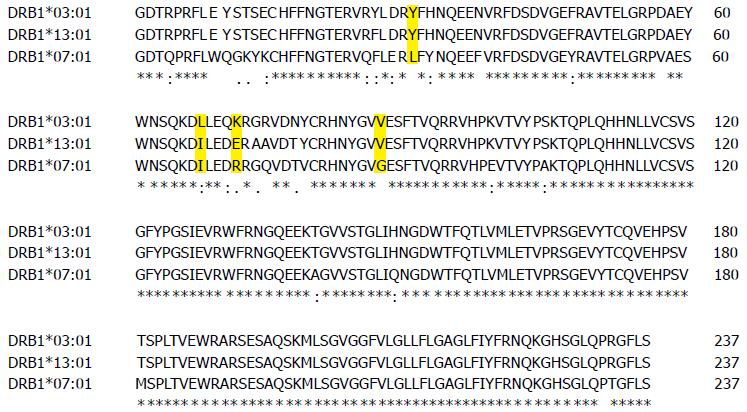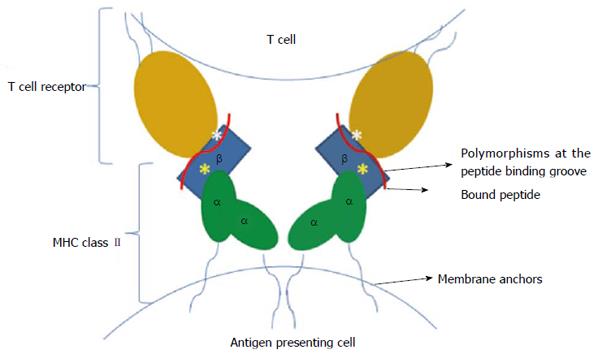Copyright
©2014 Baishideng Publishing Group Inc.
World J Gastroenterol. Jul 7, 2014; 20(25): 8179-8186
Published online Jul 7, 2014. doi: 10.3748/wjg.v20.i25.8179
Published online Jul 7, 2014. doi: 10.3748/wjg.v20.i25.8179
Figure 1 Sequence similarity analysis of the β subdomain of three different major histocompatibility complex class II proteins.
An asterisks underneath a capital letter denotes a single, fully conserved residue. The semicolons and dots represent amino acids with conservation of strong groups or weak groups, respectively. For a mismatch between amino acids, a space is left underneath. The residues determined to be important for T-cell receptor recognition are shown with yellow shading.
Figure 2 Possible model illustrating the single-nucleotide polymorphic regions of major histocompatibility complex class II that affect T-cell receptor recognition.
The yellow asterisks show mutational sites that are buried in the peptide-binding pocket, whereas the white asterisks indicate mutations in the solvent-exposed T-cell recognition regions. This model was built according to the available crystal structures, which were published previously[41].
- Citation: Doganay L, Fejzullahu A, Katrinli S, Enc FY, Ozturk O, Colak Y, Ulasoglu C, Tuncer I, Doganay GD. Association of human leukocyte antigen DQB1 and DRB1 alleles with chronic hepatitis B. World J Gastroenterol 2014; 20(25): 8179-8186
- URL: https://www.wjgnet.com/1007-9327/full/v20/i25/8179.htm
- DOI: https://dx.doi.org/10.3748/wjg.v20.i25.8179










